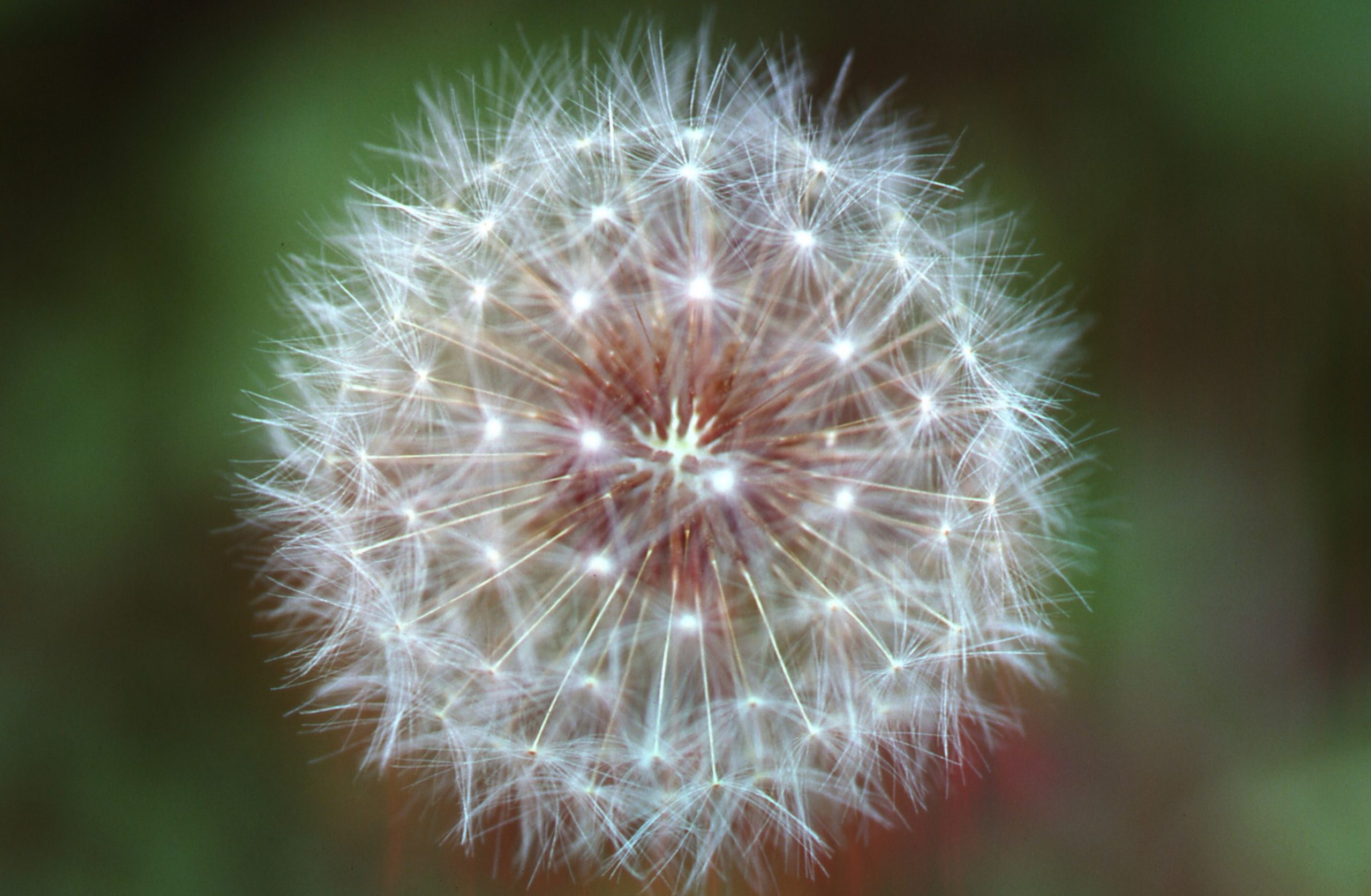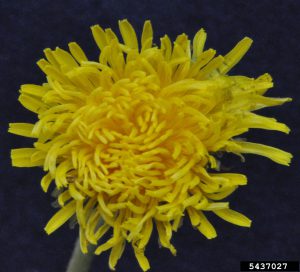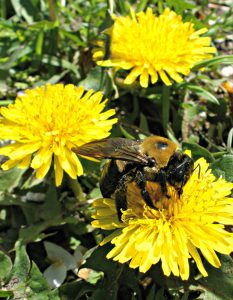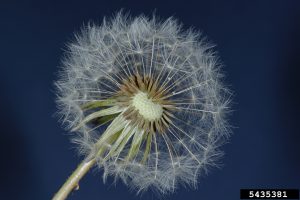
Dandelions form “blow balls” to disperse seeds by wind. Photo by Joseph OBrien, USDA Forest Service, Bugwood.org.
A Second Look at Dandelions
Many of us have memories of spotting a dandelion as a child and immediately gravitating toward it, eager to hold it up by the stem and blow with all our might. If all the puffs of white disappeared, we were sure the dandelion would grant us our wish.

Dandelion flowers, leaves, and roots are all edible and contain many vitamins, minerals, and antioxidants. Photo by Bruce Ackley, The Ohio State University, Bugwood.org.
As an adult, spotting a dandelion may still remind you of the good ole days, but when they begin to encroach upon your lawn or garden, they are likely to be seen less as a friend and more as a foe.
Perhaps the reason they give landscapers headaches is because dandelions thrive in many conditions. They have the ability to grow in the sun and in the shade, and they do well in both disturbed and undisturbed soils. Once more, they thrive in moist environments, and because they are perennials capable of developing long taproots, they also do well in dry environments. A dandelion taproot can grow as deep as three feet in search of water.

Dandelions are an important early season nectar and pollen source for bees, such as for this carpenter bee. Photo by Ansel Oommen, Bugwood.org.
Although the common dandelion (Taraxacum officinale) is native to Eurasia, it is naturalized to North America and is believed to have arrived with European settlers in the 1600s. At first glance, you may wonder why colonists bothered to transport such a small yellow flower so far. As it turns out, dandelion flowers, leaves, and taproots are all edible, serving as great sources of fiber and vitamins A, C, and K. Additionally, they are a source of antioxidants, such as beta-carotene, and minerals such as iron, calcium, potassium, and magnesium. Coupled with their ability to thrive in many conditions, you can see why dandelions made a great edition to colonial herb gardens.
Since their arrival in North America, dandelions have become an important early season nectar and pollen source for bees, and they help support both the larval and mature stages of some species of butterflies and moths. Additionally, dandelions can be a food source for wildlife, such as white-tailed deer, quail, wild turkeys, and rabbits.

A single dandelion “flower” can have more than 100 florets that each develop into a seed-like fruit that has a parachute-like pappus that can carry the seed up to five miles away. Photo by Joseph Berger, Bugwood.org.
A member of the Aster family, dandelions are related to lettuce, artichokes, and sunflowers. When you look at a dandelion flower, you are actually seeing many, many tiny flowers, called florets. A single dandelion “flower” can have more than 100 florets that open in the morning and typically close at night. After a few days, the florets remain closed and each develops a seed-like fruit atop a hollow flower stalk. As the seeds mature, the flower stalk elongates up to two feet high and a tall standing “blow ball” forms. Each ball is comprised of many seeds, each attached to a tuft of bristles, or pappus, that can use the wind to parachute the seed up to five miles away.
So next time you notice a patch of dandelions standing tall on the landscape, put down your herbicide and take a closer look. Observe the visits from hungry bees and butterflies, perhaps pluck some fresh flower petals to add to your morning pancakes, and then pick out your favorite puff of white and make a wish.
- Connecting With Youth Through the Love of the Outdoors - August 12, 2021
- A Second Look at Dandelions - August 21, 2020
- Grow Native Milkweed to Support the Monarchs - April 18, 2019
